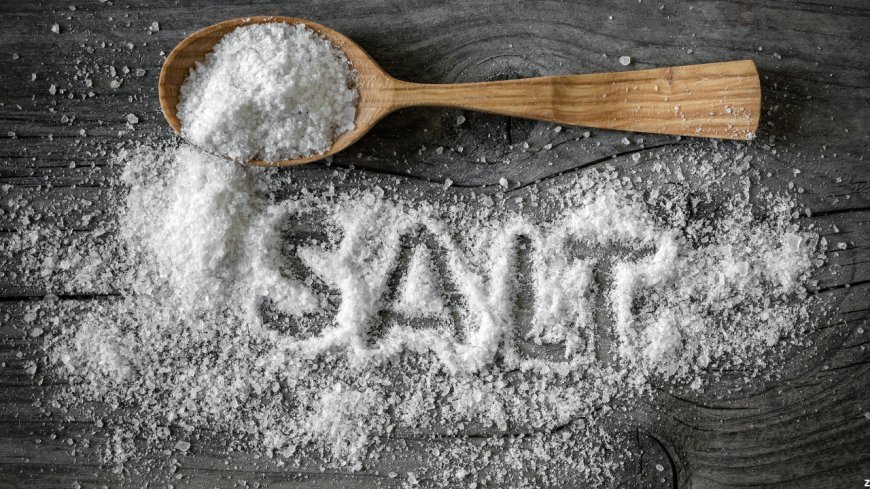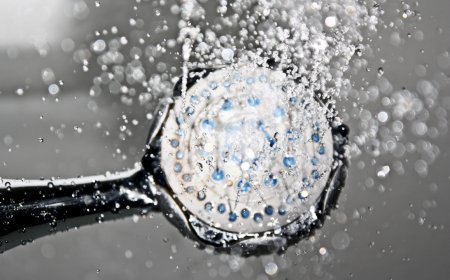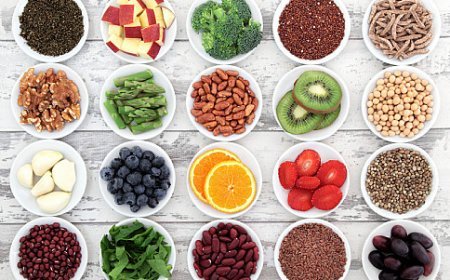This Is What Happens to Your Heart When You Cut Back on Salt
This article examines the physiological effects of reducing sodium intake, including lowered blood pressure, reduced heart strain, improved vascular health, and decreased risk of cardiovascular events like heart attacks and strokes. It highlights mechanisms such as decreased fluid retention and enhanced endothelial function, drawing from health guidelines and studies, while providing practical strategies like label reading, flavor alternatives, and diet plans for sustainable changes.

In today's fast-paced world, salt is everywhere—from processed snacks to restaurant meals. While it enhances flavor, excessive sodium intake is a major contributor to high blood pressure (hypertension), which strains the heart and increases the risk of heart disease and stroke. The good news? Cutting back on salt can lead to significant improvements in your cardiovascular health. This article explores the science behind how reducing sodium affects your blood pressure and heart, backed by evidence from health organizations and studies, along with actionable tips to make the change easier.
The Link Between Salt, Blood Pressure, and Heart Health
Sodium, the main component of table salt, plays a key role in regulating fluid balance in your body. When you consume too much, your kidneys struggle to excrete the excess, leading to fluid retention. This increases blood volume, forcing your heart to work harder to pump blood through your arteries. Over time, this elevates blood pressure, damaging blood vessel walls, promoting plaque buildup (atherosclerosis), and heightening the risk of heart attacks, strokes, and heart failure.
High sodium intake also impairs endothelial function—the inner lining of blood vessels—causing stiffness in arteries and reducing their ability to dilate. This can lead to oxidative stress and inflammation, further exacerbating cardiovascular issues. Studies show that Americans consume an average of over 3,400 mg of sodium daily, far exceeding recommendations, primarily from packaged and restaurant foods. Globally, excessive sodium is linked to millions of deaths from cardiovascular disease each year.
What Happens When You Reduce Sodium Intake?
Reducing salt triggers a cascade of positive changes in your body, often noticeable within weeks. Here's a breakdown:
- Lower Blood Pressure: Even a modest reduction—say, cutting 1,000 mg per day—can decrease systolic blood pressure (the top number) by 5-6 mmHg in people with hypertension and 2-3 mmHg in those without. This effect is more pronounced in individuals with high blood pressure, older adults, and those who are "salt-sensitive" (where BP responds strongly to sodium changes). Meta-analyses confirm that sustained sodium reduction for four or more weeks significantly lowers BP across sexes and ethnic groups, reducing the incidence of hypertension.
- Improved Heart Function: With less fluid retention, your heart doesn't have to pump as hard, easing strain on the cardiovascular system. This can reverse endothelial dysfunction, improve blood vessel flexibility, and reduce arterial stiffness. Research indicates that low-sodium diets enhance nitric oxide production, which helps vessels relax, and decrease oxidative stress, leading to better overall heart health. In hypertensive patients, sodium reduction also cuts down on albumin excretion (a marker of kidney strain) and improves vascular reactivity.
- Reduced Risk of Cardiovascular Events: Long-term, lowering sodium intake is associated with fewer heart attacks, strokes, and deaths from heart disease. A J-shaped relationship exists, meaning very high or extremely low sodium (below 3g/day) can pose risks, but moderate reduction (to 2-2.3g/day) offers broad benefits without adverse effects for most people. It also mitigates factors like insulin resistance and sympathetic nervous system overactivity.
- Other Body-Wide Benefits: Beyond the heart, cutting salt can improve kidney function, reduce inflammation, and even aid in weight management by curbing fluid retention. Combining it with higher potassium intake (from fruits and veggies) amplifies these effects, as potassium helps counteract sodium's impact on BP.
These changes can be life-changing: For instance, following a low-sodium plan like the DASH (Dietary Approaches to Stop Hypertension) diet can drop systolic BP by 8-14 points, potentially normalizing readings for those with mild hypertension.
Practical Tips for Cutting Back on Salt
Transitioning to a lower-sodium lifestyle doesn't mean bland food. Here are evidence-based strategies:
- Read Labels Religiously: Aim for foods with 200 mg or less sodium per serving for snacks and 600 mg or less for meals. Look for "low-sodium" or "no salt added" options. Avoid hidden sources like "soda" or "Na" in ingredients.
- Cook Smart at Home: Skip the salt shaker during cooking and at the table. Flavor with herbs (basil, dill, rosemary), spices (cumin, paprika, turmeric), garlic, ginger, lemon juice, or vinegar. Opt for fresh or frozen produce over canned (unless no-salt-added). Rinse canned beans or veggies to remove excess sodium.
- Choose Whole Foods: Prioritize fruits, vegetables, lean proteins (fish, poultry), unsalted nuts, seeds, and whole grains. Incorporate potassium-rich foods like bananas, oranges, potatoes, spinach, and broccoli to balance sodium.
- Dine Out Wisely: Request dishes without added salt, choose grilled or steamed options, and add flavor with pepper or lemon. Limit fast food, sauces, and processed meats like bacon or deli items.
- Adopt Heart-Healthy Diets: Try the DASH or Mediterranean diet, which emphasize unprocessed foods and can make sodium reduction sustainable. Start gradually—reduce by 500-1,000 mg daily—to let your taste buds adjust.
- Monitor and Consult: Track your intake using apps or journals. If you have conditions like kidney issues, consult a doctor before using salt substitutes (which often contain potassium).
Remember, the goal is progress, not perfection. Most people need only about 500 mg of sodium daily for basic functions, so sticking to 1,500-2,300 mg (about ¾ to 1 teaspoon of salt) is achievable and beneficial.
Final Thoughts
Cutting back on salt is a simple yet powerful step toward a healthier heart. By lowering blood pressure, improving vessel function, and reducing cardiovascular risks, it can add years to your life. Pair it with exercise, weight management, and limiting alcohol for even greater results. Always consult a healthcare professional for personalized advice, as this is not a substitute for medical guidance.
What's Your Reaction?
 Like
0
Like
0
 Dislike
0
Dislike
0
 Love
0
Love
0
 Funny
0
Funny
0
 Angry
0
Angry
0
 Sad
0
Sad
0
 Wow
0
Wow
0
































